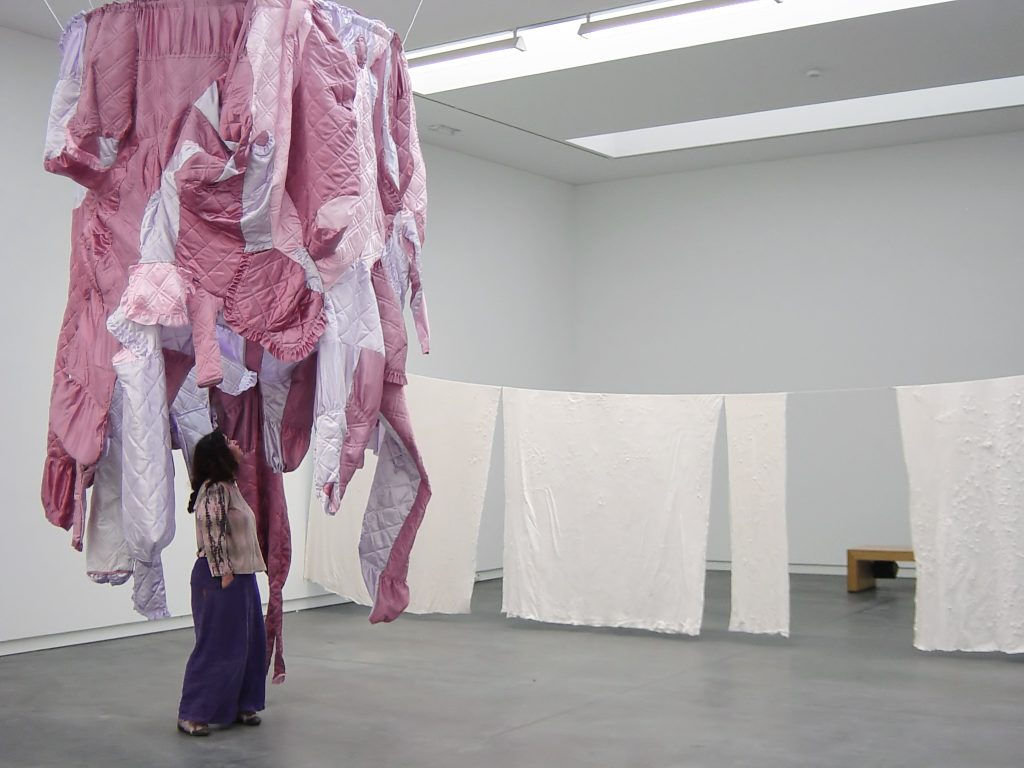
encaustic and oil paint on wood
21 x 18 cm
Anke Roder ( Bayreuth 1964) is a Dutch based painter living in Zandeweer, north coast of the Netherlands. Her studio is surrounded by a big artist garden, composed like a living colour changing painting and combining form and structure of plants. These colours of nature are of great importance for her paintings. The blushing sky has similar shades of pink and red as the blooming roses, translated into colour tones in her landscapes. Coastal walks reflect a greater space, empty planes and fields are changing every season and absorb the luminous skies. We remember clouds, shades and shadows, reflections of light, all together as a philosophical space. She always had a deep interest in natural surroundings and phenomena and works with an awareness of being part of a greater picture.

encaustic and oilpaint on oakwood
21 x 18 x 4 cm
Can you explain who you are and what you do?
I was born in Germany (Bayreuth), lived in quite some places over there (my father worked as a textile designer and had to set up new departments in several places) grew up in a small town and village in Schwarzwald and live in the Netherlands, my mother’s country, since I was 11 years old. I lived in all parts of the country, started in the south, studied in the middle and now work and live in the very north near the Northsea.
I’m a painter, love to work on paper as well, and write on a freelance regular base about contemporary art and artists.
What themes do you pursue in your work?
Nature, colour, space, light, horizon, tactility, serenity, transparence, gesture of painting act.

encaustic on oakwood
26 x 18 cm
When and why did you use beeswax in your art?
Some years after I graduated artschool I worked on a multi-panelled installation called ‘De kleurenleer volgens de natuur’ (Colour theory according to nature). I researched different materials in abstract monochromes and was interested in how time affected colour, using copper, oxydated copper, textiles, rubber, and different paints and pigments.
In this piece I discovered raw beeswax, with it’s smell of honey and natural ochre colour. Melting it filled my studio with this scent of nature, and there were so many ways to use the paint. My first experiments were all abstract paintings, testing every possible way to use brush techniques, relief, painting slow for smooth surfaces or painting very quick and light to get a moss covered appearance. When I added pigments and discovered that the raw waxcolour affected the brightness of colour, I started using purified beeswax.
What qualities of beeswax as a material appeal to you?
I like the semi-transparent qualities, and the way pigments reflect light in this translucency. For me it’s the best way to experience colour in a very pure way. The liquid melted paint solidifies without loosing it’s fluid qualities.

encaustic and oilpaint on oakwood
37 x 22,5 x 4 cm
What is your creative process like?
In the mornings I read, write, answer emails and go for a coastwalk to empty my head. I take a look on the work I had done the day before.
Almost every day of the week after lunchtime I paint, starting to melt the beeswax, which takes about an hour, using that time to do some preparing panels or making works on paper. My best painting time is later in the afternoons until dinnertime, sometimes continue painting in the evenings. After I finished work I usually scroll through social media to react and select some new works for our Insta page Le Jardin RoBo.
What role do you think artists have in society?
Awareness is the first word that comes into my mind. There are many roles and ways to connect or react to society. As an artist I prefer standing with my face towards the beauty of nature. I don’t have any illusions that art can change the repeating history of world and mankind. As a human I fiercely believe that we have to take care for our natural surroundings, the oceans, the climate, ecosystems of flora and fauna and that we have to protect this vulnerable balance.

encaustic and oilpaint on driftwood
17 x 30 x 4 cm
What inspires you?
Inspiration is in everything: art, nature, the changing light of seasons, travels, philosophy, natural history, literature, poetry, music, coastwalks, hours in the garden.
What have you learned from your career as an artist that you would like to pass onto other practising artists?
Work hard, be kind, it’s not about ego, make a lot, improve, show your works and communicate through your work.
And two books that were of great importance for me:
Agnes Martin – Writings, 2005, Publisher Hatje Cantz Publishers
Kuo Hsi -An essay on landscape painting
Both painter-writers write about the untroubled mind, and find words describing the act of creating and the best circumstances to follow your path and do your work.
Do you think artists need a goal?
It’s all about balance, exhibitions are great goals to push yourself towards your very best. Artist residencies on the other hand are so very important for working in new surroundings and offering time to research.
The act of painting is vital by itself, just start and your goal will appear.
What could you not live without as an artist?
Studio space and inner fire

Where to follow Anke Roder:
WEBSITE : ankeroder.nl
FACEBOOK : www.facebook.com
INSTAGRAM : instagram.com/ankeroder/









